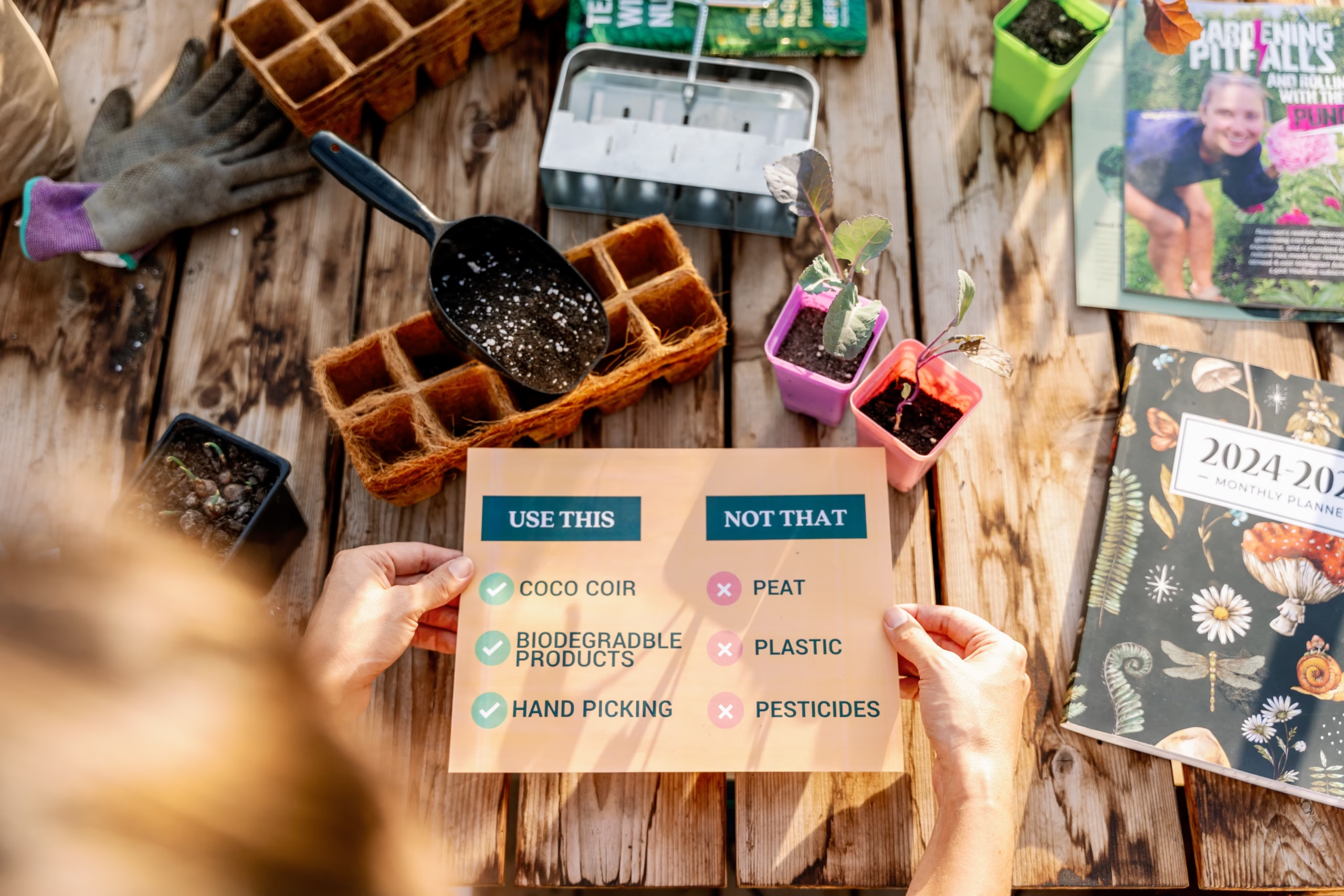
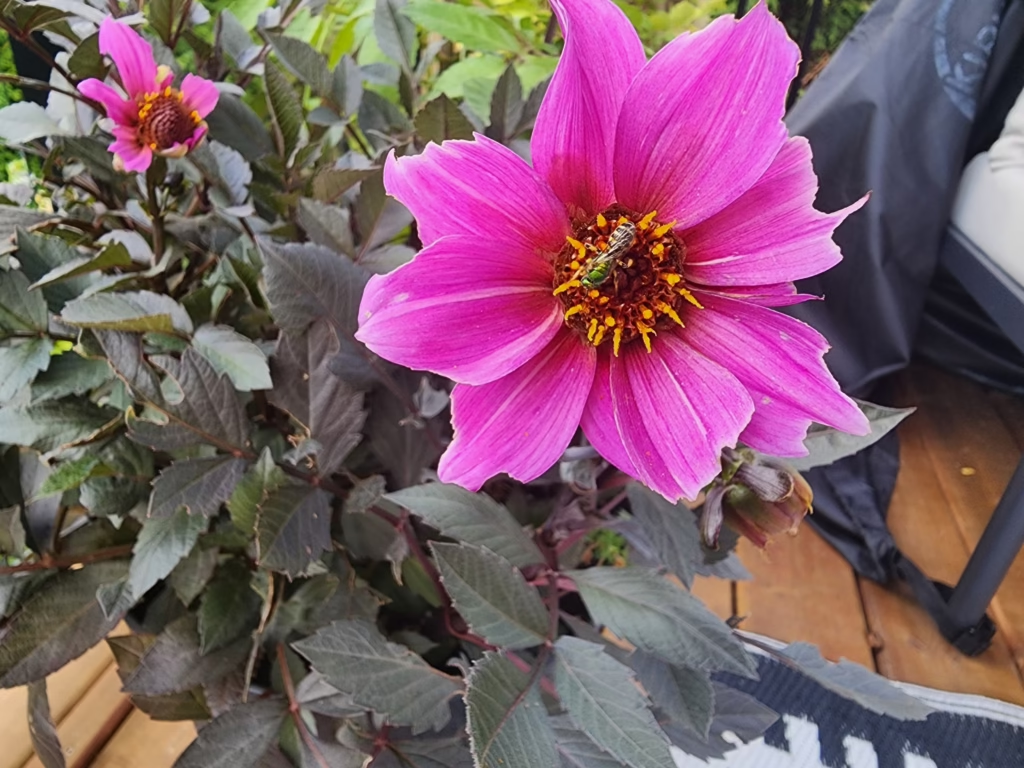
If you’re not already growing flowers, now is the time! Flowers are one of the most rewarding plants in gardening. All it takes is one plant to bring you multiple blooms, the varieties available is vast, and even a single bloom can bring endless amounts of joy. Another thing we love about growing flowers is that the amount of flower pests is a fraction of those for food. We could write an endless list of pest pressures for vegetables but the list of flower pests is (thankfully!) much smaller.
There’s so many reasons to add flowers to your garden, but we love having the option of cutting them to bring into the house, or even gifting them to friends and family. Whenever my parents come for a visit, I always make sure to have fresh flowers in the guest room for them. It’s a special touch. The other benefit to growing flowers is that it helps boost pollinator populations in your garden which is both good for them, and good for any vegetables you also grow.
As you read along, I’ll take you through some of the easiest flowers to grow from seed, or to find at the nursery at an affordable price. Not only do these flowers look amazing, but they have a long vase life, come in a variety of shapes and colours, and the pollinators love them. Finally, I’ll cover some tips and tricks when setting up your cut flower garden to ensure straight stems that look great in a vase.
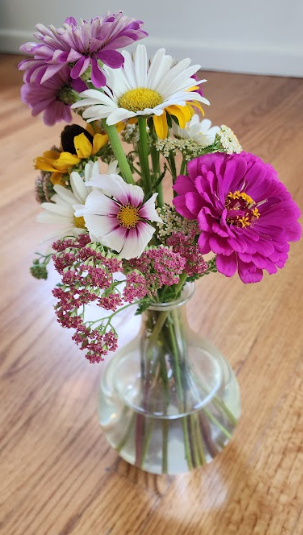
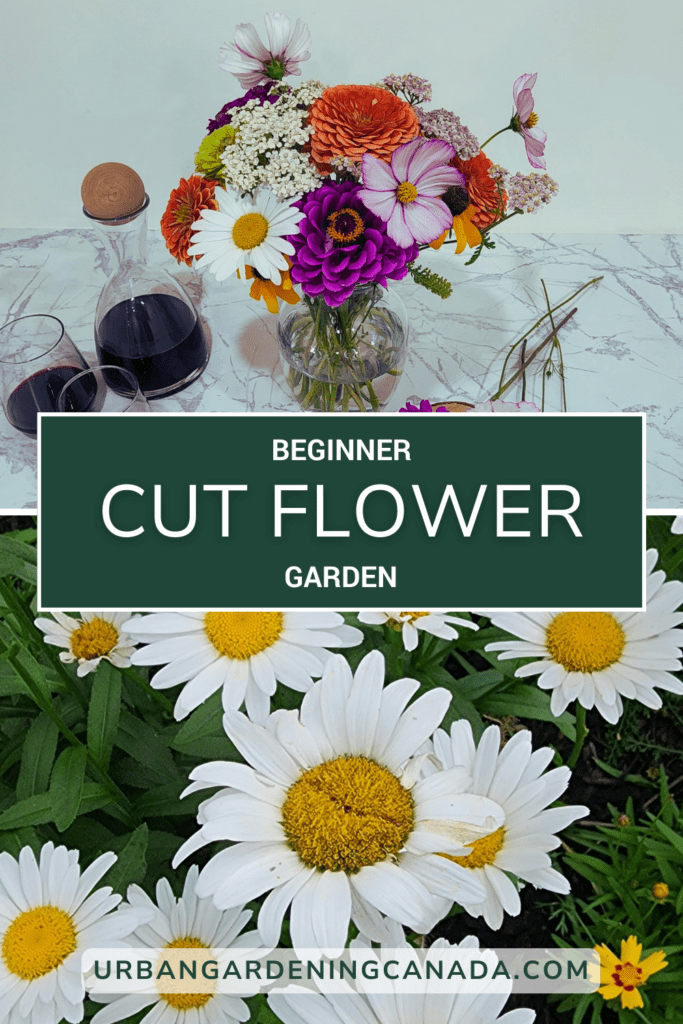
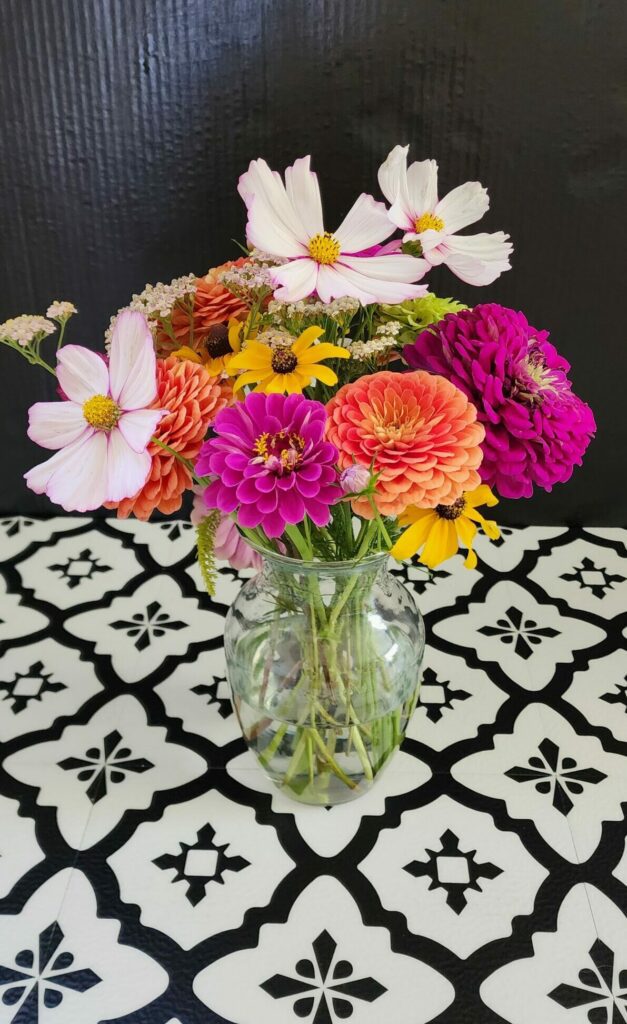
Our blog is reader supported. Some of the links in this article are affiliates that earn us a small commission at no extra cost to you.
Spring flowers are the best. After a long, cold, snowy winter, having the chance to have fresh garden flowers in the house is an absolute delight. The three flowers mentioned below are perennials (come back every year) and look absolutely stunning in a vase.
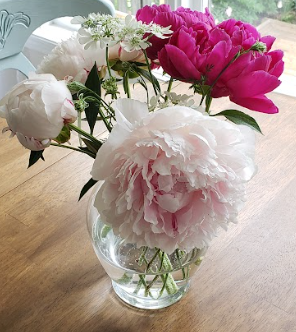
These are my favourite flower. Peonies flower in the spring and come in variations from white, coral, pink to red. You can also find yellow varieties but they tend to be less common.
Peonies can be herbaceous (die back to the ground each winter), hybrid/Itoh (have woody stems that die back near the ground) and tree peonies.
An important item to note with peonies is that they take multiple years to establish and they can be very finicky. If you plant them too deep, they usually won’t produce flowers. If you move it across your garden, they’ll likely not produce flowers the following year. If you’re adding peonies to your garden, put careful consideration into the location of your garden as you won’t want to transplant them in the future, without risk of losing blooms.
Peonies should be cut before they open. The best time to pick peonies is as the bud begins to open. It will feel like a squishy marshmallow and you’ll see the colour of the bloom starting to show. This is the perfect time to cut them, and they will open in the vase.
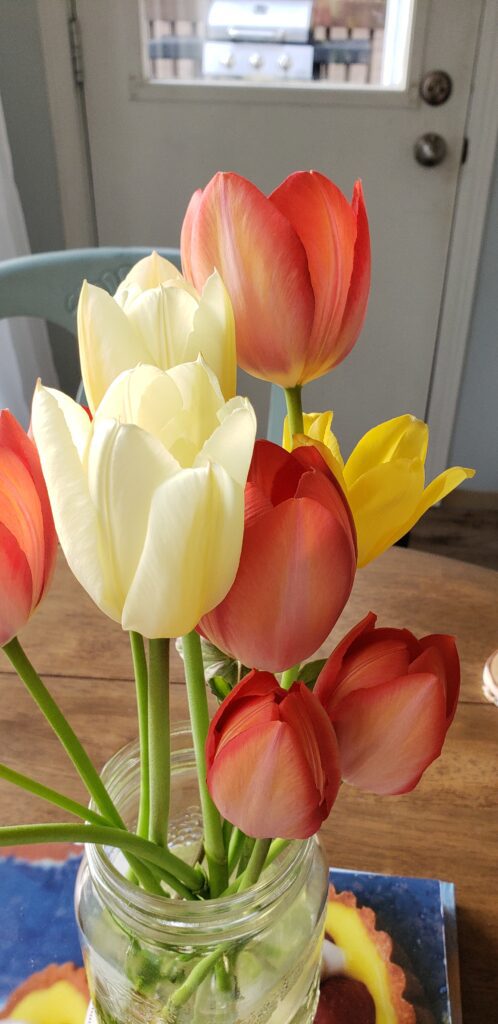
Tulips are a spring bulb that make for beautiful cut flowers. They come in a variety of different shapes and colours. Some flowers are round while others are oval (like in the photo). Some have frills and others look like peonies.
Tulips look their best in their first year, and the following years the blooms may be smaller or may not bloom at all. To get beautiful blooms every year, ensure you buy hardy tulips for your zone, and plant them in a more protected area (ie; near your home). If you choose to not cut all of the tulips, those remaining outdoors should have their stem cut down as soon as the flower drops its petals.
• The wide selection that tulips come in means you can find the perfect flower for you
• A vase of tulips can look absolutely stunning and they don’t need any other flowers to make it look beautiful.
Pick tulips when the bud is still closed. As soon as you start seeing colour on the bud, that is the perfect time to cut them. Oftentimes, the stem of tulips will grow substantially in the vase, so you’ll need to trim them down every few days.
• The selection to choose from is incredible.
• They bloom fairly early in spring so you get fresh blooms in the house while it’s still cold out.
• Squirrels love tulip bulbs and will dig them up any chance they can. You can avoid this by adding some wood ash (ie from a fireplace) over the bulbs before you plant them.
• Squirrels/other animals like to pop the blooms off to access water in the bloom. You can avoid this by leaving water out in a tray for wildlife.
• They bloom best in their first year. By following best care practices, they can bloom well in following years. Additionally, you can plant more bulbs and rotate where you cut each year.
Daffodils
Daffodils are another one of my absolute favourite spring flowers. These are one of the first blooms to appear in spring, like a bright ray of sunshine. Daffodils come in a beautiful array of sizes and colours, from white, blush, yellow through to sherbert orange.
Additionally, they grow in different sizes, from small penny sized blooms to the size of your palm. Some of them even have a beautiful scent. The daffodil in the photo is a single bloom trumpet (which is good for pollinators), but daffodils can come with double blooms that resemble closer to peonies than daffodils (bottom right of the photo)!
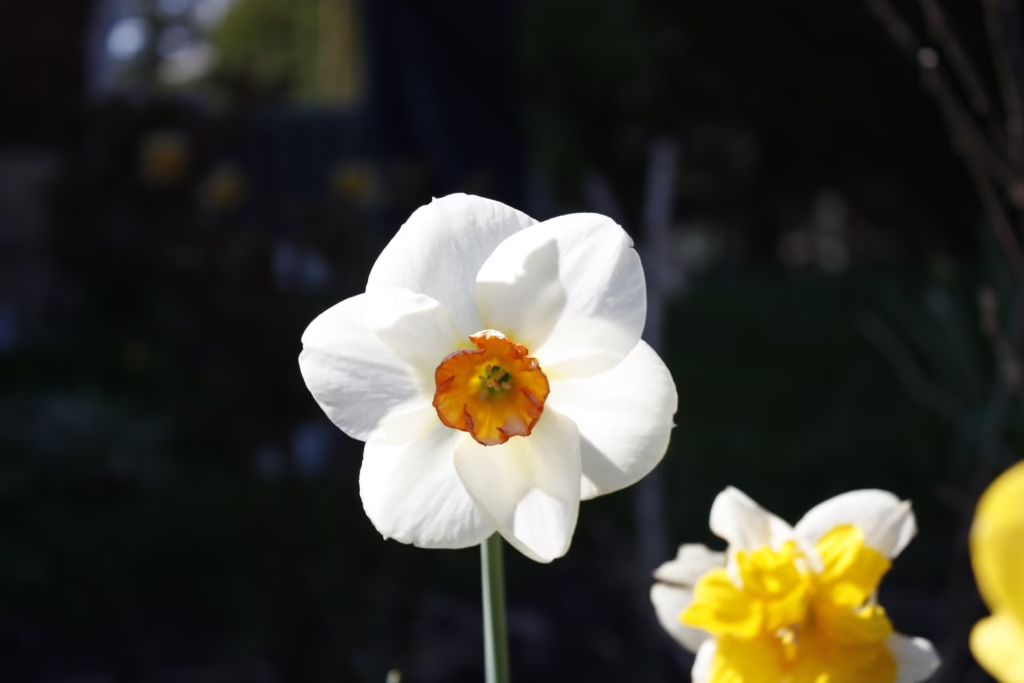
• They are one of the first to bloom in the season.
• If you leave blooms on the plant and let them go to seed, daffodils naturalize and multiply over the years – which means more flowers!
• Not many pests care for daffodils so they are a stress-free bulb.
Similar to tulips, pick daffodils when the flower bud is still closed but showing its colour. Beware that daffodils release a toxin from their stem which can kill other flowers (and make you sick if you drank it.. Someone on the internet actually did this..). They secrete mucilage which can block the stems of other flowers, stopping them from taking up water. If you want to mix daffodils with other spring bulbs, cut the daffodils and place them in a separate vase of water for at least one hour. After the time has passed, you can mix them with the other flowers. However, if you trim the stem, remember to separate them again for the hour or more in a separate vase of water.
• They are one of the first flowers to bloom
• Animals don’t care for them and tend to leave them alone
• Naturalize fairly quickly giving you more flowers throughout the years
• Can poison other flowers if you mix them in a vase together too quickly
Rudbeckia are a workhorse in the garden. They are one of the most familiar and reliable flowers. The yellow brings an extra bit of brightness into bouquets, and they come in a multitude of shades from red, orange, brown to yellow. They are like miniature sunflowers, but without the squirrel pressure that sunflowers receive.

• Rudbeckia has a good vase life.
• It flowers prolifically and blooms over the entire summer.
• We absolutely love the earthy tones of the red and brown Rudbeckia. They add a je ne sais quoi to the bouquet. A chefs kiss!
Pick rudbeckia just as the blooms are opening. Cut the stems longer than you need in order to encourage the plant to branch out lower and continue to provide long stems. The leaves are easy to pull off the stem. I usually hold the stem and run my hands down it to pull all the leaves off. Wearing gloves is recommended because the stems can be irritating to your skin.
What is more iconic than the daisy? White petals with a bright yellow centre, these are a classic perennial flower for any garden. White flowers are a great way to bring attention to the other bright, vibrant flowers in a vase, allowing your eye to relax before picking up the next vibrant flower beside it.
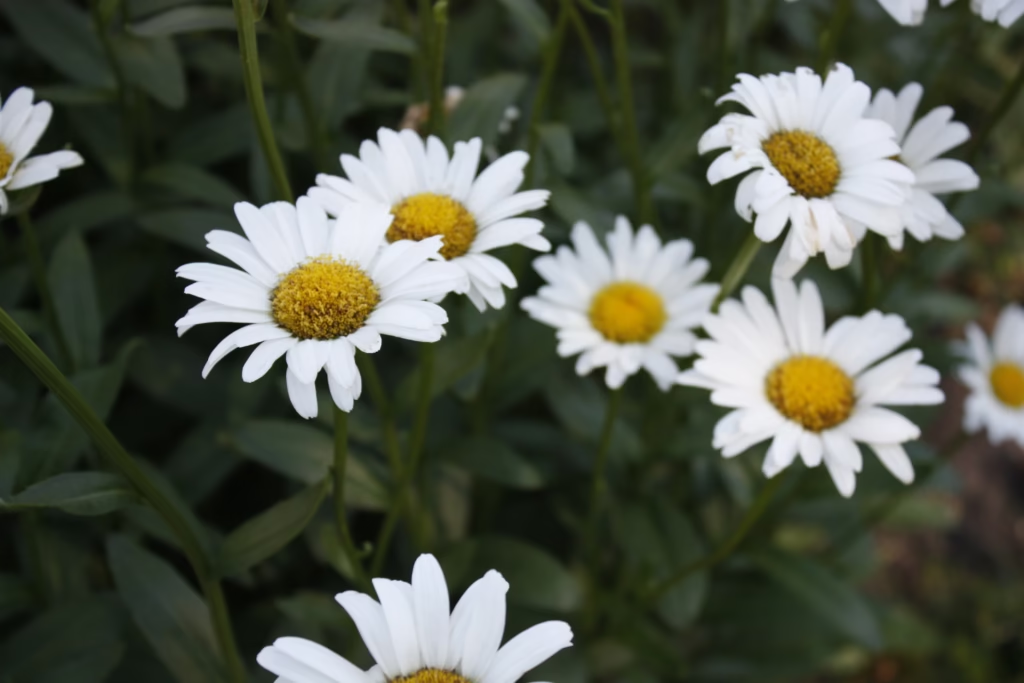
Similar to rudbeckia, pick daisies just as the flower is beginning to open. Cut the stem to the height of the vase.
Dahlias are beautiful, tender perennial flowers grown from tubers but can also be started from seed. They have a strong cult-like following from many flower growers as they come in such a wide variety of colours, shapes and sizes. Often times, dahlias are the showstopping flower in a bouquet.
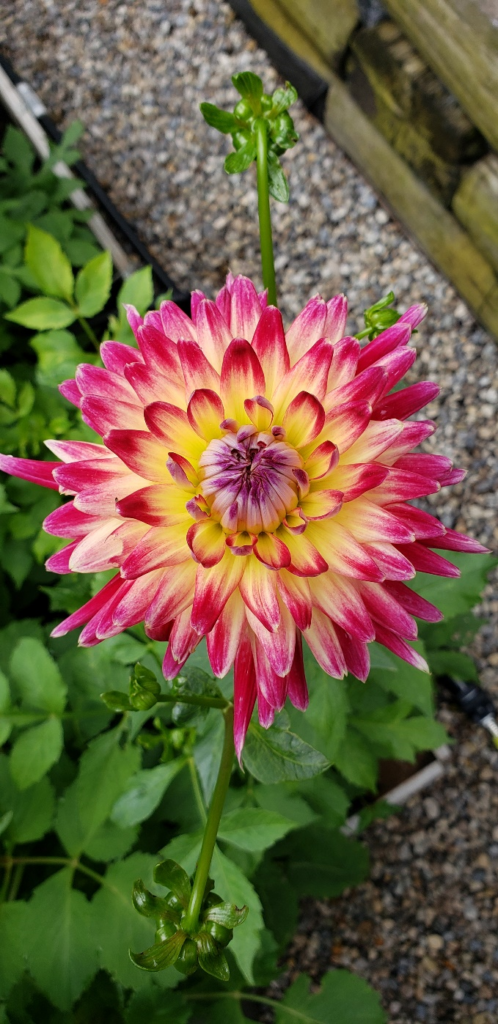
Pick the flowers just as they are about to fully open. Cut deep into the plant so that you have nice long stems for your arrangements but also to promote the plant to continue growing long stems.
Zinnias are a classic flower for home growers and small flower farmers. They come in a beautiful range of colours (including green!) and have an amazing vase life. They are loved by butterflies, bees and hummingbirds, so any blooms you leave out will be enjoyed by pollinators. My favourite variety to grow for cut flowers is Benary’s Giant
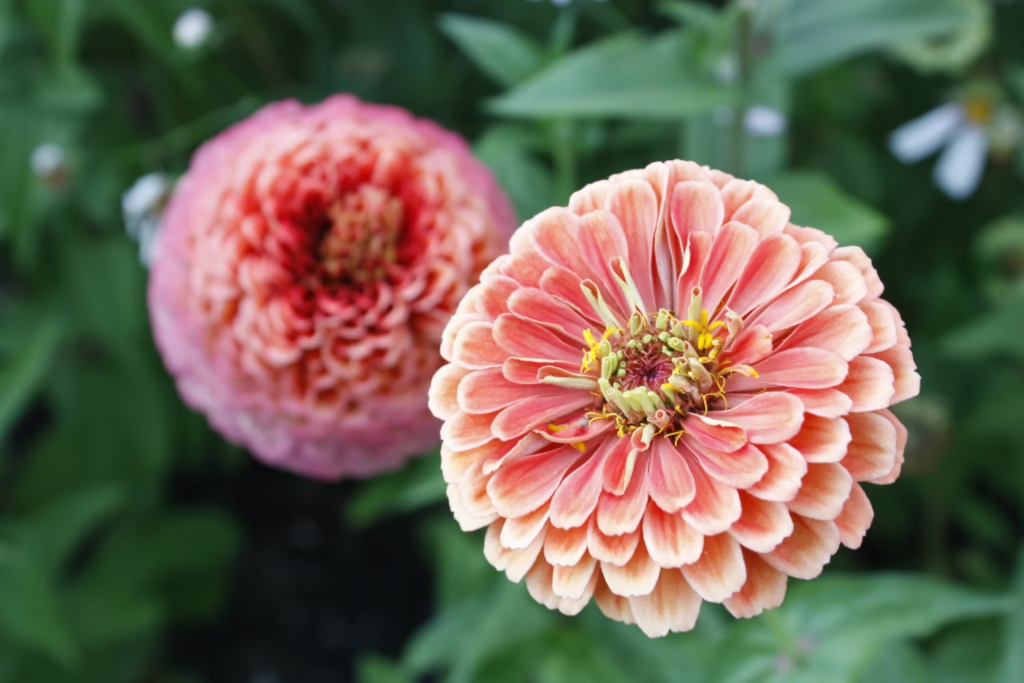
Zinnias should be picked when they are fully in bloom. They are ready to be picked when the stem is firm. Hold the stem 20cm below the bloom, gently shake it and if it stays straight and firm, it’s ready to be harvested.
Cosmos are the perfect, dainty flower. They are a beautiful, drought resistant annual that fits into any garden. Not only are their blooms beautiful, but the foliage is also very attractive. They come in a fun assortment of colours and shapes, from double blooms to ones that look like the paper holding a cupcake.

Pick cosmos just as the flower is starting to open. Cut deep in the plant for good stem length. As cosmos progress through the summer they will produce more blooms on shorter stems, so the deeper and more frequently you cut them, the better blooms you will get through the summer.
Yarrow is a multi-purpose flower. It’s pollinator-friendly, a medicinal plant and works amazingly in bouquets. It’s easy to grow from seed and comes back every year. It’s hardy to Canada zone 2 which makes it a brilliant plant to add to the garden.
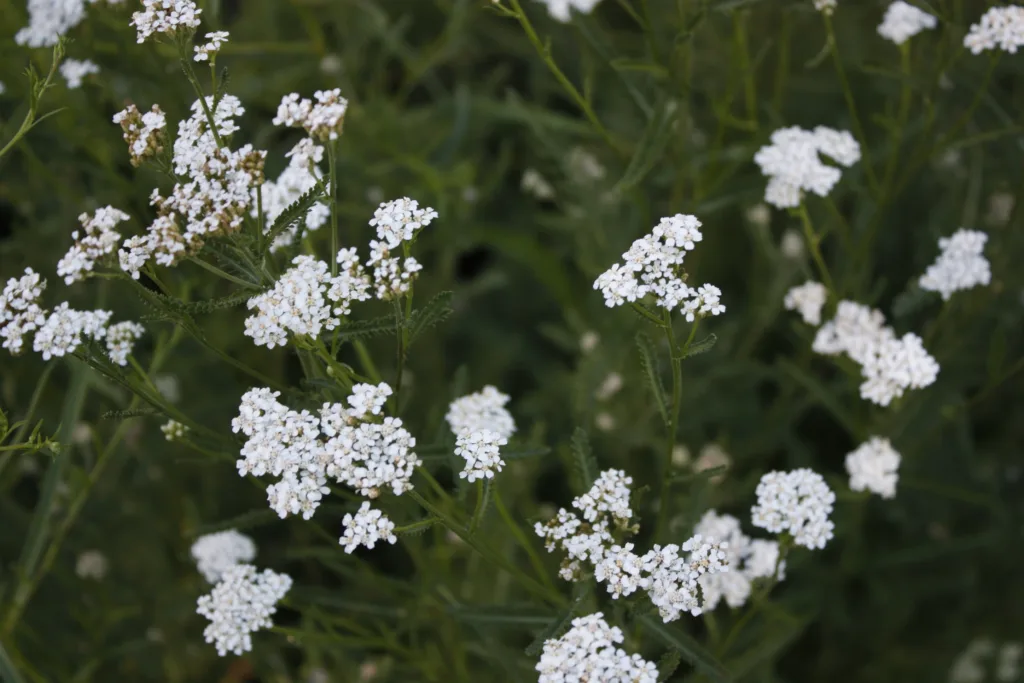
Pick yarrow when the blooms are open. It’s very easy to pull the leaves off the stem. Cut deep to give a good stem length and to promote long stems for future harvests
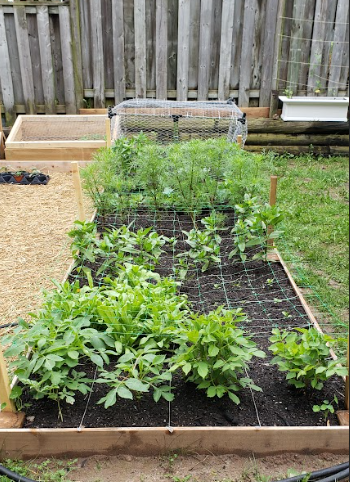
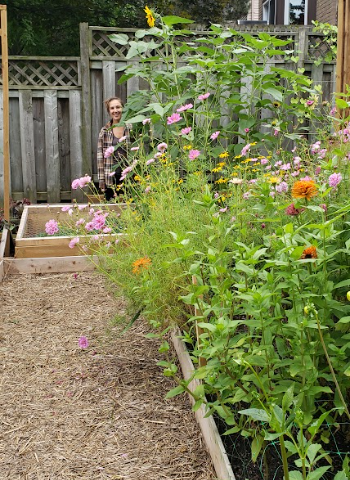
As you get more comfortable starting flowers from seed you can expand your arrangements. Playing with different shapes, heights and textures is a great way to add interest to a bouquet. Flowers such as Bells of Ireland and Snapdragons add height, while grasses and Orlaya can add texture.
When choosing the seeds and varieties for your bouquet, look at pictures of bouquets that inspire you and notice the colour palette used. This can help you decide what varieties and colours you want to grow and incorporate in your garden. Some people love the soft pastels and pinks, while others love the hot, vibrant red and orange.
Finally, spending time looking at bouquets online or at markets will help inspire you on how to build your bouquet or can help troubleshoot what may be missing if you aren’t completely happy.
Making bouquets is an art and each year you will progressively get better. So have patience, but most importantly, have fun!

Gardening Advice for Short Season Gardeners
Privacy Policy • Terms and Conditions
© 2025 by Urban Gardening Canada